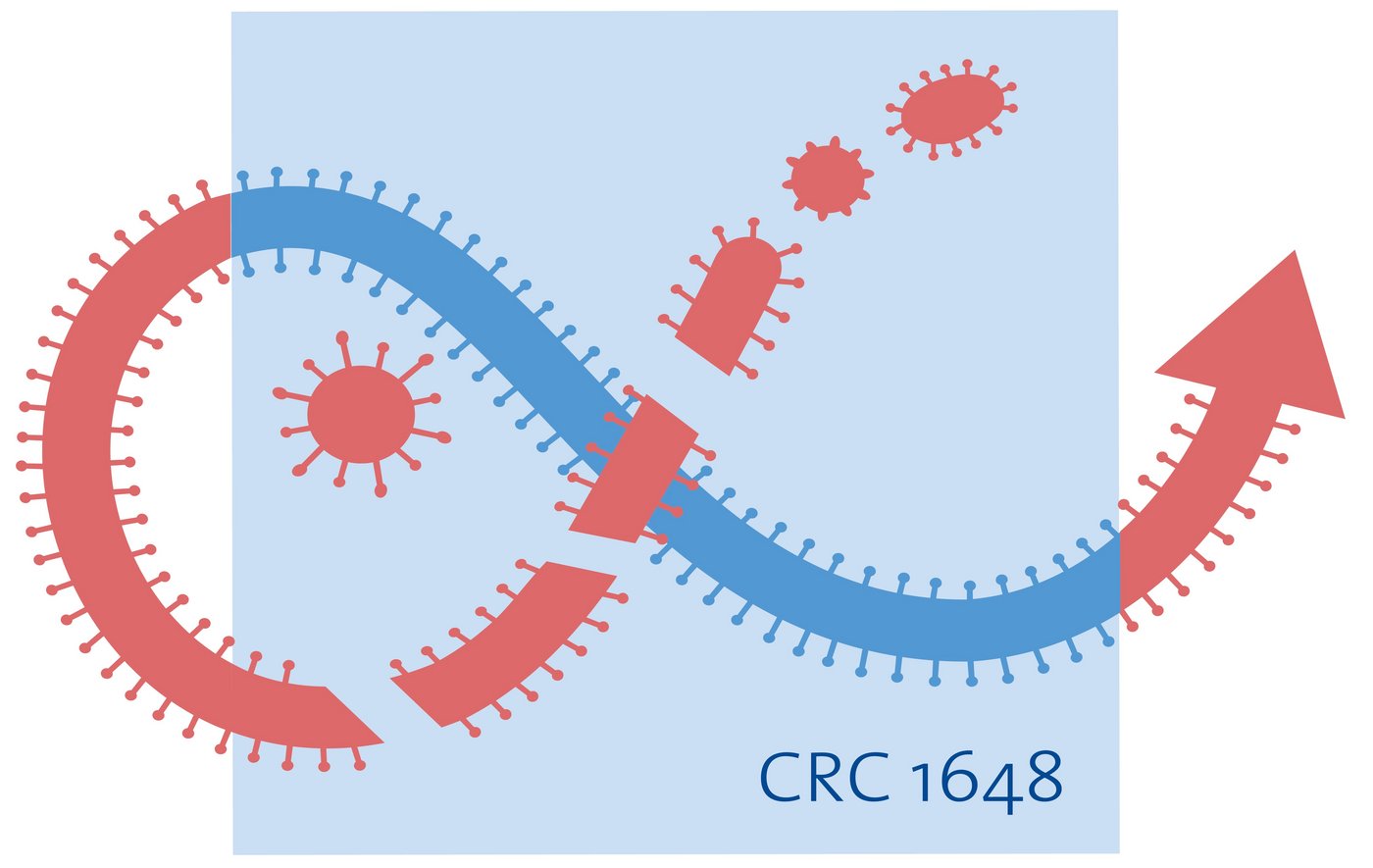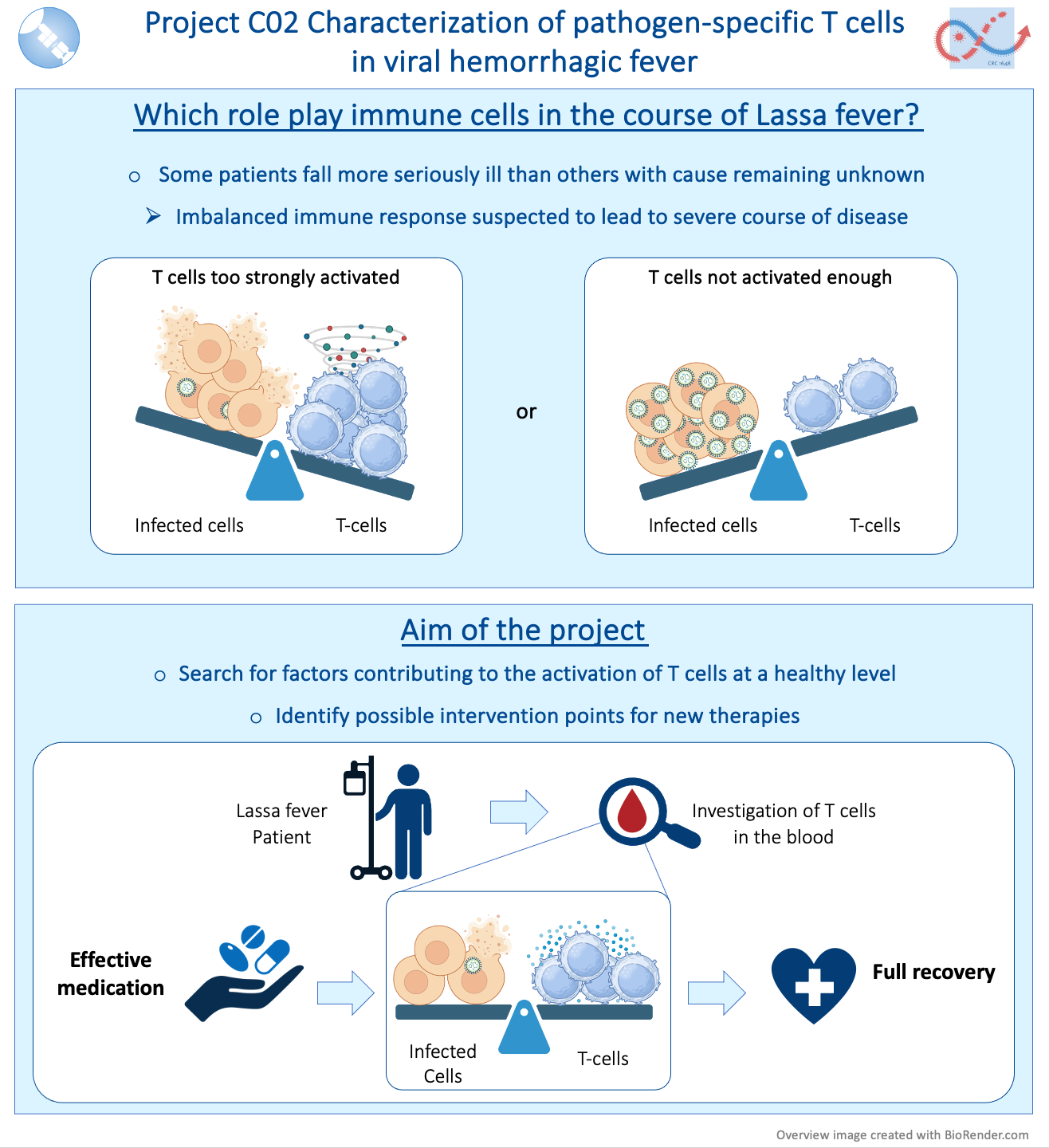Characterization of pathogen-specific T cells in viral hemorrhagic fever
Lassa fever belongs to the group of hemorrhagic fevers and is caused by the Lassa virus. Sick patients can develop very serious symptoms such as haemorrhage, kidney failure or central nervous system disorders. A frequent cause of death is multiple organ failure. The disease occurs mainly in West Africa and several 100,000 people are infected every year. It is not yet understood why some patients fall more seriously ill than others. However, it is suspected that the immune system, which is supposed to fight the infection, contributes to the severity of the disease in some cases.
In our project, we will investigate whether T cells play a role as pathogenesis factors. To this end, we will analyse the blood of Lassa fever patients from Nigeria. We will investigate when and how T cells that recognise the virus form after the onset of the disease and we will characterise their function. We will combine the information on the presence or absence of these cells and their function with the data on the disease severity and frequency of certain symptoms. This study aims to better understand the exact role of T cells in the development of severe Lassa fever and whether there are potential therapies that can be applied here.
Click here for the official website.





![[Translate to English:] [Translate to English:] Logo DFG](/fileadmin/media/Allgemeines_und_Platzhalter/Logo/Logo_DFG.png)
![[Translate to English:] [Translate to English:] Logo DZIF](/fileadmin/media/Das_Institut/Kooperationen/Logo_DZIF_01.png)
![[Translate to English:] [Translate to English:] Logo Leibniz Gemeinschaft](/fileadmin/media/Das_Institut/Kooperationen/Logo_Leibniz_Gemeinschaft.png)
![[Translate to English:] [Translate to English:] Logo Jürgen Manchot Stiftung](/fileadmin/media/Allgemeines_und_Platzhalter/Logo/Logo_Juergen_Manchot_Stiftung.png)





